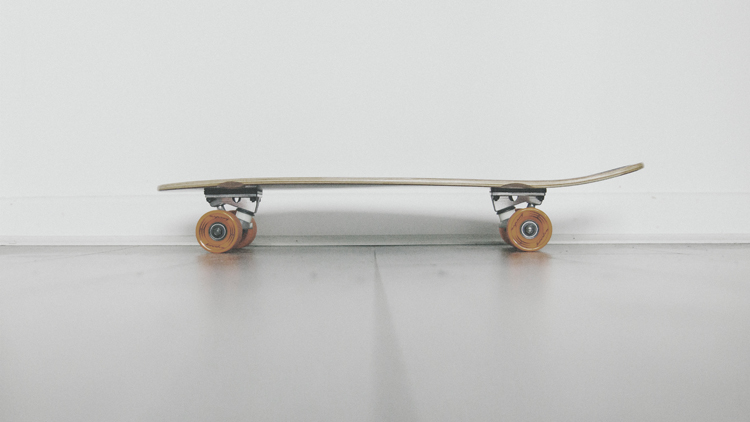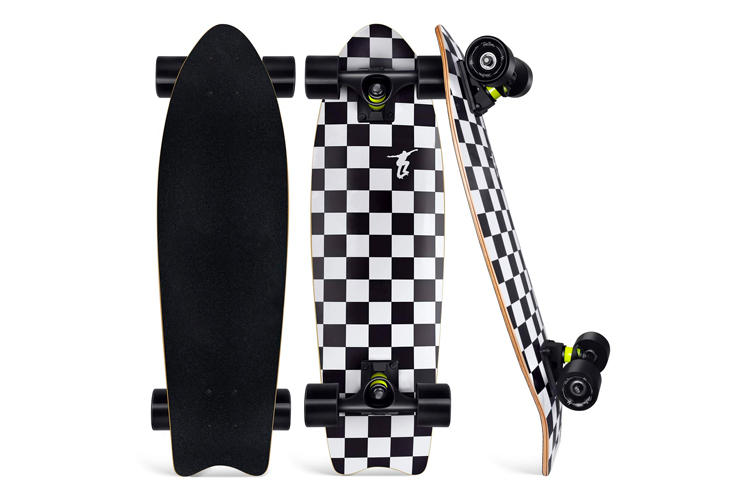Cruiser skateboards are versatile, easy to maneuver, and perfect for riders seeking a stylish and comfortable means of transportation.
They are designed for a smooth and enjoyable ride through the streets, pump tracks, local parks, or even college campuses.
In this comprehensive guide, we'll dive into the world of cruisers, exploring their unique features, materials, average price, and the type of riding they're best suited for.
Cruiser skateboards, as the name suggests, are specifically designed for comfortable cruising and casual riding.
They are typically shorter and more lightweight than longboards, making them easy to carry around and store.
Cruisers boast a combination of features found in both traditional skateboards and longboards, resulting in a perfect blend of portability and stability.
Size and Dimensions
The average size of a cruiser skateboard ranges between 28 and 34 inches in length and 7.5 to 10 inches in width.
The compact size and shape make it ideal for navigating through tight spaces and executing quick turns.
Cruiser skateboards also feature a slight concave, which provides better foot grip and control while riding.

Difference Between Cruisers and Longboards
While cruisers and longboards share some similarities in terms of their purpose, there are a few key differences:
Size
Cruisers are shorter and narrower than longboards, which can range from 33 to 60 inches in length.
The compact size of cruisers makes them more agile and easier to carry around.
Trucks
Cruiser skateboards often have traditional kingpin (TKP) trucks, which provide quicker turning and a more responsive ride.
Longboards typically use reverse kingpin (RKP) trucks, which are more stable at high speeds but less maneuverable.
Wheels
Cruisers usually have softer wheels (78A to 87A durometer) compared to traditional skateboards, but they are often smaller than longboard wheels.
The soft wheels provide better grip and a smoother ride on uneven surfaces, while the smaller size helps maintain the board's agility.
Purpose
Cruisers are best suited for short-to-medium distance rides, carving, and casual street cruising, while longboards excel at downhill racing, long-distance commuting, and freeriding.

Materials Used
Cruiser skateboards are made from a variety of materials, each offering unique characteristics that cater to different riding preferences:
- Maple: The most common material used for cruiser decks is 7-ply Canadian maple. This hardwood is known for its strength, durability, and moderate flex, providing a stable and comfortable ride;
- Bamboo: Bamboo decks are lighter and more flexible than maple, offering a more responsive and springy ride. They are also eco-friendly, as bamboo is a fast-growing and sustainable resource;
- Composite: Composite decks are made from a combination of materials, such as fiberglass, carbon fiber, or plastic, layered with wood. These decks are lightweight and robust, providing a balance between flexibility and rigidity;
- Plastic: Plastic decks, also known as penny boards, are made from high-quality polypropylene. They are lightweight, easy to maintain, and often cheaper than wooden decks. However, they may lack the same level of grip and responsiveness as wooden decks;
Average Price
The price of a cruiser skateboard can vary greatly depending on the materials used, brand, and additional features.
On average, a decent-quality cruiser board can cost anywhere between $50 to $250.
Renowned brands with higher-quality components and unique designs may charge a premium, while budget-friendly options are available for those looking for an affordable yet functional board.
Type of Riding
Cruiser skateboards are best suited for casual and relaxed riding experiences. They excel in the following types of riding:
- Commuting: Due to their compact size and maneuverability, cruisers are perfect for short-to-medium distance commutes, such as navigating through urban environments, college campuses, or local parks. Their soft wheels absorb vibrations from uneven surfaces, providing a smooth and comfortable ride;
- Carving: The responsive nature of cruiser skateboards makes them ideal for carving, which involves leaning into turns to create a fluid, surfing-like motion. This type of riding requires a board with good grip and flex, and cruisers fit the bill perfectly;
- Cruising: As the name suggests, cruiser skateboards are designed for leisurely rides and exploring the neighborhood at a relaxed pace. Their stability and ease of control make them perfect for riders of all skill levels, from beginners to seasoned skateboarders;
- Mild Downhill: While cruiser boards are not designed for high-speed downhill racing like longboards, they can handle gentle downhill slopes with ease. The rider should be cautious and aware of their board's limitations to avoid accidents;
